The Fleet
Boeing B737-800

The Boeing 737 is a short to medium range, single aisle, narrow body jet airliner. Originally developed as a shorter, lower cost twin engine airliner derived from Boeing's 727 and 707, the 737 has nine variants, from the early -100 to the most recent and largest, the -900. Currently series -600 through -900 are being produced.
First envisioned in 1964, the 737 entered service in 1968. Forty years later it has become the most ordered and produced commercial passenger jet in the world. It is Boeing's last surviving narrow-body airliner, sometimes serving markets previously filled by 707, 727, 757, DC-9 and MD-80/90 airlines. Continuously manufactured by Boeing since 1967 with over 7,800 ordered and over 5,600 delivered (as of 2008), there are over 1,250 of the type airborne at any given time.On average, a 737 departs or lands somewhere every five seconds.
Specs:
Crew:4-6
Seating capacity: 159
Length: 119 ft 6 in (36.5 m)
Wingspan: 94 ft 8 in (28.9 m)
Height: 36 ft 5 in (11.1 m)
Cargo Capacity:1,373 ft³(38.9 m³)
Empty Weight: 73,040 lbs (33,200 kg)
Engine (x 2): CFM International 56-3B-2
Max. fuel capacity: 6,130 US gal (23,170 L)
Range: 2,165 NM (4,005 km)
Max Altitude: 37,000 ft (11,300 m)
Downloads: Available in the Crew Center
Boeing 767-300ER
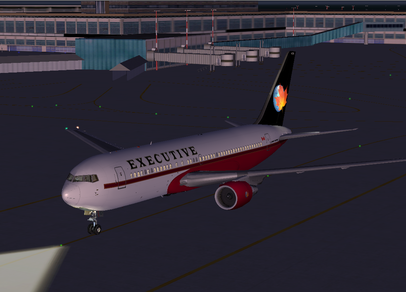
Production design of the fuel-efficient, medium-to-short range twinjet began in 1978 when United Airlines placed an order for 30 aircraft. The first 767-200, designed to be the first wide-body aircraft to fly short and medium routes, was delivered to United in mid-1982. The larger 767-300 series was launched in 1983 and the first airplane was delivered to Japan Airlines in September of 1986. Following the release of both the 200 and 300 series, an extended range version of each was developed to allow the plane to service longer routes. As of 1996, the 591 767s in service had carried 795 million passengers on 4.8 million flights and today, the 767 crosses the Atlantic more than any other airplane type.
Specs:
No. Of Engines: 2
Aircraft Type: Jet
Passenger Capacity (Max): 325
Passenger Capacity (Min): 218
Range (in Miles): 6830
Cruising Speed (MPH): 593
Payload Capacity (in Lbs): 43,200
Wingspan: 156
Length: 180
Height: 52
Takeoff Weight (in Lbs): 412,000
Body Type: widebody
Cabin Type: pressurized
Downloads: Available in the Crew Center
Boeing 777-200 ER
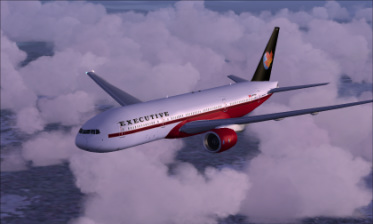
The 777 was originally conceived as a stretched 767, but Boeing instead adopted an all new design. Notable 777 design features include a unique fuselage cross section, Boeing's first application of fly-by-wire, an advanced technology glass flightdeck with five liquid crystal displays, comparatively large scale use of composites (10% by weight), and advanced and extremely powerful engines. The 777 was also offered with optional folding wings where the outer 6m/21ft of each would fold upwards for operations at space restricted airports.
Specs:
Aircraft Type: Jet
Passenger Capacity (Max): 440
Passenger Capacity (Min): 301
Range (in Miles): 7,725
Cruising Speed (MPH): 593
Payload Capacity (in Lbs): 112,030
Wingspan: 199 ft 11 in
Length: 209 ft 1 in
Height: 61.6 ft
Takeoff Weight (in Lbs): 656,000
Body Type: Widebody
Cabin Type: pressurized
Downloads: Available in the Crew Center
Future Aircrafts
Bombardier Dash 8- Q400
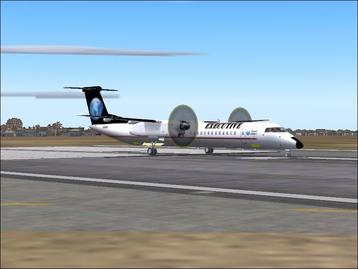
Bombardier Dash 8-300

Beechcraft 1900 D
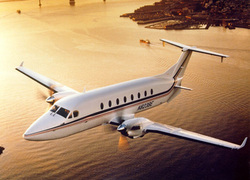
Bombardier CRJ - 700
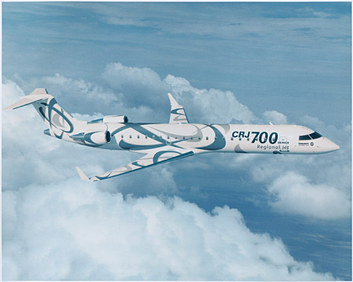
also 200 variant Planned

